|
Custer
After a peaceful night's sleep
in our comfortable motel and a terrific breakfast, we set off
for our
day's touring. Driving through Custer State Park we didn't come
across any bison
but we saw plenty of droppings, so we know they are still
there! We did, however, see
these beautiful
antelope.
|

|
One of the most
exciting drives was past these magnificent oddly shaped, weathered
granite spires. In the picture below, you can see some of them
in the background. On the left is a postcard showing the
famous Needles Eye
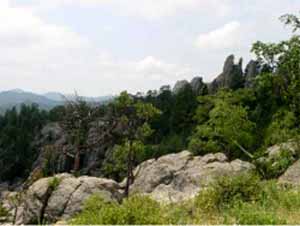
|
Next stop
was the Mammoth Site in Hot Springs. It is believed to be the
largest concentra-
tion of Columbian mammoth bones found to date in the
Western Hemisphere. The site is
believed to be 26,000 years old and
it is thought that it used to be a sinkhole where animals
became trapped
in the slippery, quicksand-like banks and died of starvation. The
site is
now situated in a building and escavations are
ongoing.
Our next destination was the Crazy Horse Memorial.
Here we spent hours walking around
and admiring the beautiful Indian
beadwork, arts and crafts. Our visit was timed to perfec-
tion because
as we were about to leave, the clouds started rolling in and soon the
memorial
was enveloped in a thick white cotton ball.
|
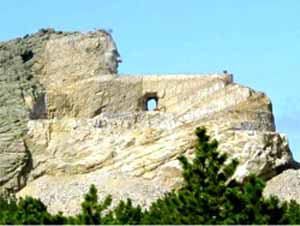
|
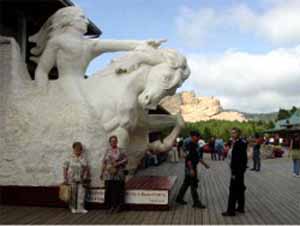
|
|
One can clearly see the
working platforms on the top of the head |
Linda and I in front of
a 1/34th scale model with the actual memorial in the
background |
Here are some postcards that I have scanned in with more
information
|
Top picture shows the
"nose blast" in August 1993 and bottom picture is the completed face
as it is today
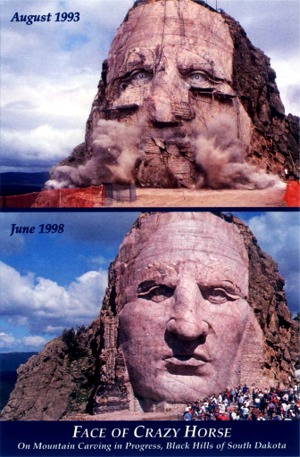
|
Born in Boston of Polish
descent and orphaned at age one, sculptor Korczak Ziolkowski
(1908-1982) was completley self-taught. Shown here with his
marble 1/300th Crazy Horse scale model, he was invited to carve the
mountain by Lakota chiefs. Korczak made the Memorial a
non-profit, humanitarian project
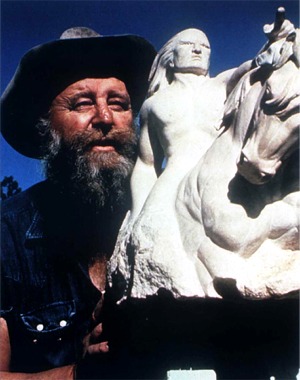
|
|

|
The
popular "Fighting Stallions" bronze is a larger-than-life size
enlargement from Korczak's 18-inch-high, African mahogany
original.
An unusual aspect
of the sculpture is that both horses are balanced on the tail of one
horse.
|
|